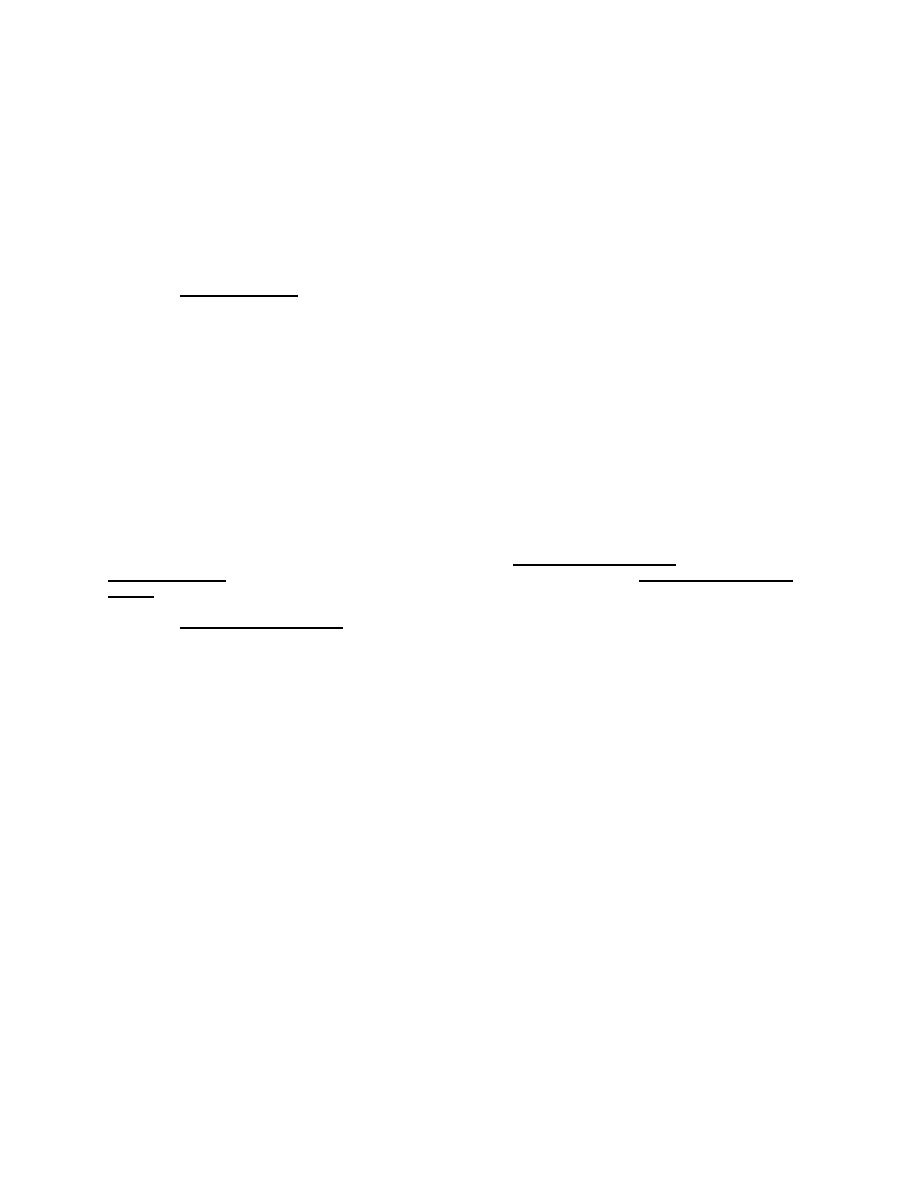
measuring angular rotation in degrees, and thrust bearings to support
vane at ground surface. Procedures for the vane shear test and methods of
interpretation are described under ASTM Standard D2573, Field Vane Shear
Test in Cohesive Soil.
3. DEFORMATION MODULI. A number of different methods are available for
obtaining values of deformation moduli in soil and rock. Each method has
its own advantages or disadvantages and in situ testing should only be
attempted with a full knowledge of the limitations of the several
techniques.
a. Pressuremeter. See Figure 11 (modified from Reference 13). The
pressuremeter test is an in situ lateral loading test performed in a
borehole by means of a cylindrical probe. Under increments of pressure,
radial expansion is measured, and the modulus of deformation is calculated.
If the test is carried to failure, shear strengths can be calculated and are
generally higher than those obtained from vane shear tests. Materials
difficult to sample (e.g., sands, residual soil, tills, soft rock) can be
effectively investigated by the pressuremeter. Equipment and procedures for
the pressuremeter are described in Reference 13.
(1) Limitations. Pressuremeter tests are sensitive to test
procedures. The tests measure soil compressibility in the radial direction
and some assumptions are required on the ratio between the vertical moduli
to radial moduli. This may be difficult to interpret and thus of only
limited value for stratified soils, for very soft soils, and for soils where
drainage conditions during loading are not known. Roughness of the borehole
wall affects test results, although the self-boring pressuremeter eliminates
some of this disadvantage (see Reference 16, French Self-Boring
Pressuremeter, by Baguelin and Jezequal, and Reference 17, Cambridge In-Situ
Probe, by Wroth).
b. Plate Bearing Test. The plate bearing test can be used as an
indicator of compressibility and as a supplement to other compressibility
data.
(1) Procedure. For ordinary tests for foundation studies, use
procedure of ASTM Standard D1194, Test for Bearing Capacity Of Soil for
Static Load on Spread Footings, except that dial gages reading to 0.001 in.
should be substituted. Tests are utilized to estimate the modulus of
subgrade reaction and settlements of spread foundations. Results obtained
have no relation to deep seated settlement from volume change under load of
entire foundation.
(2) Analysis of Test Results. (See Figure 12.) Determine yield
point pressure for logarithmic plot of load versus settlement. Convert
modulus of subgrade reaction determined from test K+vi, to the property K+v,
for use in computing immediate settlement (Chapter 5). In general, tests
should be conducted with groundwater saturation conditions simulating those
anticipated under the actual structure.
Data from the plate load test is applicable to material only in
the immediate zone (say to a depth of two plate diameters) of the plate and
should not be extrapolated unless material at greater depth is essentially
the same.
7.1-100



 Previous Page
Previous Page
